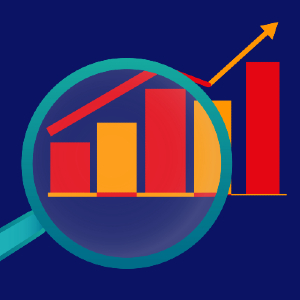
A metadata-driven data warehouse (MDW) offers a modern approach that is designed to make EDW development much more simplified and faster. It makes use of metadata (data about your data) as its foundation and combines data modeling and ETL functionalities to build data warehouses.
Popular data warehousing tools with a metadata-driven architecture allow developers to work on a logical level as opposed to writing code manually and make use of pre-defined code templates for creating or updating your data warehouse’s schema.
These code templates are well-tested, high-quality lines of code that are used to create/update your schema or perform ETL operations on your data warehouse.
Metadata-Driven vs. Traditional Data Warehousing
There are major differences between how metadata-driven warehouses are designed and developed as opposed to traditional data warehouses. Here, we compare both these approaches against various factors below:
Propagate Business Changes Quickly
Changes to the data warehouse are more complex and time-consuming in traditional data warehouses than in a metadata-driven approach. To illustrate, let’s take an example of changing a single column’s data type. In the traditional approach, you will need to update individual code artifacts and reflect the changes across your entire ETL pipeline.
Contrary to this, in an MDW environment, the data modelling/designer and ETL are integrated and all changes are propagated through the metadata, not through the code. This means that if you change the column’s data type in the metadata, all code and pipelines will be recreated automatically to reflect the changes. This increases development speed and ensures consistency. This also means that an MDW can be more responsive to business needs since it can be easily changed to meet rapidly changing requirements.
Opens a World of Options to Utilize Modern Technology
Data platforms change and evolve continuously and staying up to date with such changes can be quite challenging. ETL code that you write today might become obsolete and unusable in a year. With traditional data warehouses, you need to rewrite and modify such obsolete code to be able to benefit from new technologies and up-to-date data platforms.
With metadata-driven data warehouses, however, the scenario is different. This is because all design and transformations are captured at the logical, metadata level. This does not make the MDW dependent on a single technology or data platform. The benefit here is that you can easily take the existing project and relaunch it on an entirely different platform, just by changing configurations.
Code Consistency Through and Through
When you build a traditional data warehouse, each developer has their own approach to coding and solving data problems in your ETL pipeline. However, your development team can change with time, bringing new approaches and coding styles to the table. With so much code accumulated, it can become difficult for other developers to interpret, understand, and modify existing code.
This is addressed with an MDW approach because metadata is defined in a consistent manner that adheres to the architecture and data platform being used. The entire data warehouse is encapsulated in a single logical layer that is simple and easy to follow for anyone within or outside of your team. In addition, since we use templates for code generation in MDW, code patterns are always consistent and standardized.
Advantages of the Metadata-Driven Data Warehouse
We looked at the side-by-side differences between the MDW and traditional data warehouse in the section above. Let’s now discuss the benefits of the metadata-driven data warehouse approach for enterprises:
- Standardized
Framework: The metadata-driven
approach uses a consistent and standardized method for defining metadata,
making it convenient and simple to make changes to your data
warehouse. So, for example, if you start using a new SaaS service or
add a new module to your ERP, your data warehouse can be modified to add data
from the new source easily using the same consistent templates being
used for other data sources.
- Agility: The biggest advantage of the metadata-driven data warehouse is the ability to work with little to zero code. With this, you can make any changes to your schema, ETL pipeline, or ingestion patterns without writing any code, which speeds up making changes and meeting new reporting requirements.
- Maintainability: From adding a new data source to changing configurations and building new reports, everything is simplified in an MDW because it is tied directly with the metadata that you provide it with. This makes it very easy to maintain your data warehouse since all you need to keep track of is the metadata being used.
Should Enterprises Opt for Metadata-Driven Data Warehouses?
It is estimated that the development time required for making changes to a traditional data warehouse using traditional ETL can be cut down by more than 30% using a metadata-driven approach. Keeping in mind the key advantages of an MDW, such as better agility and improved consistency, it is definitely worth considering for enterprises.
Data warehouse automation tools, provide a code-free and easy-to-use platform that offers you the benefits of speed and automation, all through a simple drag-and-drop interface. The tool allows you to do everything from data modeling to ETL generation and deployment to the cloud all through a single platform.
